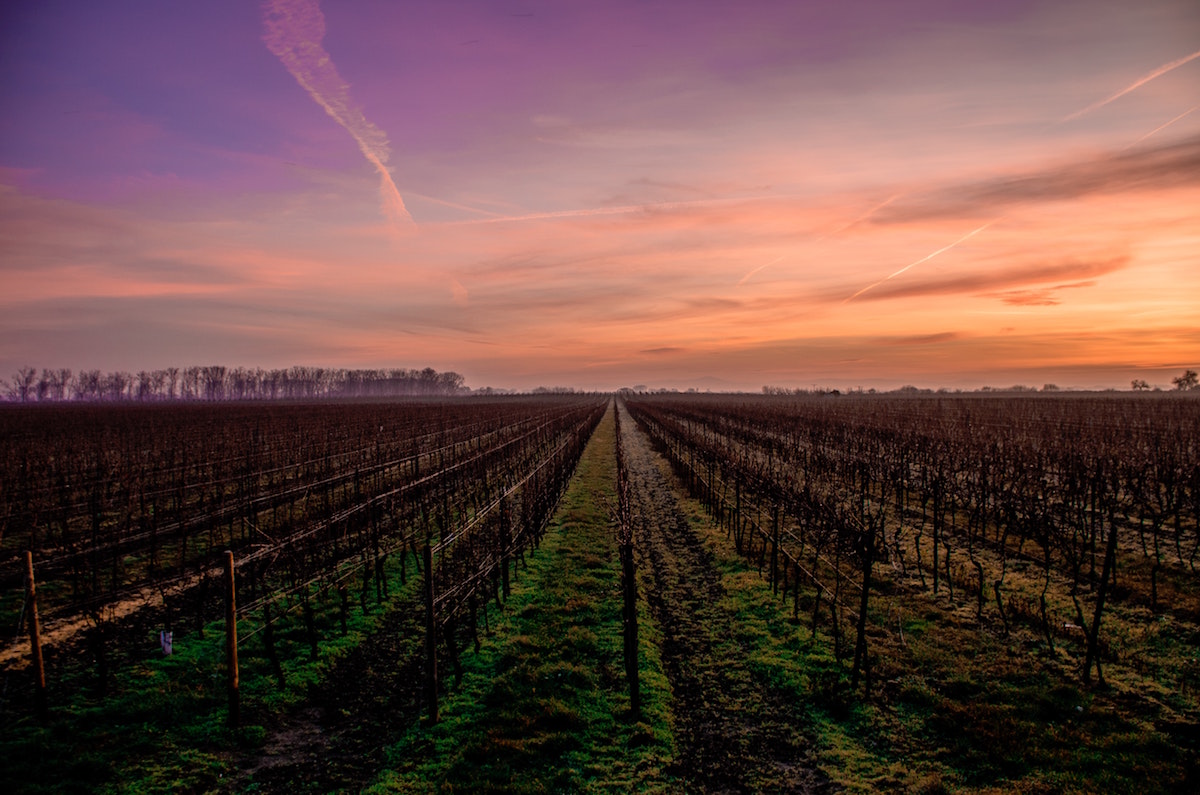Over the last twenty years, wine has become an ingrained part of the Australian palate, and has fostered an exciting new industry full of wondrous new creations and exciting new wine regions. And it is fair to say, now has never been a better time to be a winemaker.
One of the fastest growing wine regions in Australia is the Southern Highlands. From its humble beginnings over two decades ago, the region now has a growing reputation for high quality sparkling wines and white varieties. With its close proximity to the thirsty patrons of Sydney, it seems primed for success as a wine tourists paradise.
No one is more excited for the future than Tony Cosgriff, the Winemaker at Centennial Vineyards, one of the most prominent wineries in the Southern Highlands. A native of Canterbury province in New Zealand, Cosgriff first developed his love of winemaking after being inspired by the growing wine regions around the outskirts of Christchurch.
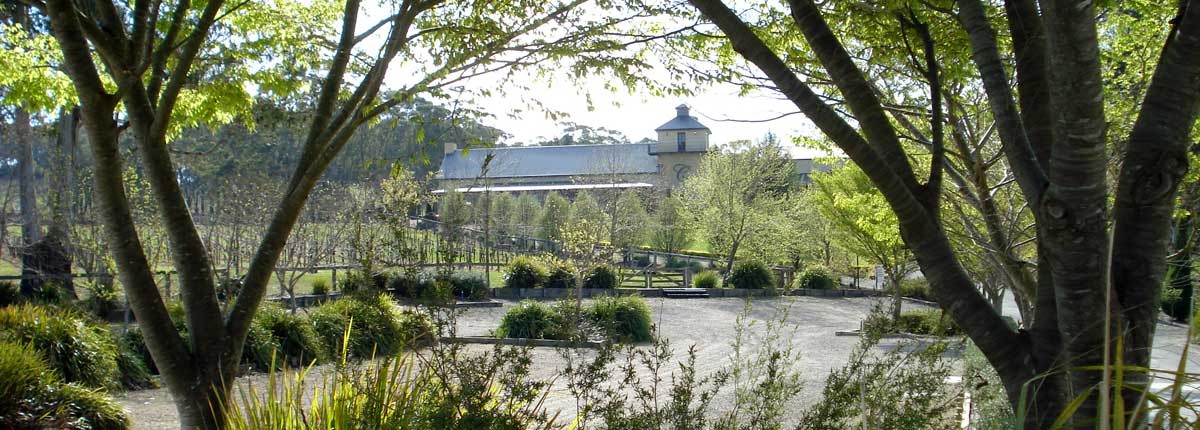
Centennial Vineyards in Spring. Image supplied by Centennial Vineyards.
“I was pretty taken with the idea of wine” he laughs.
“I had originally been studying chemistry, but around that time a lot of wineries were starting to pop up. I used to love going out there at the weekends, and I was thinking, do I really want to work in a lab? I started to use a scientific background, and that’s how it started. I wandered around the world, working at different wineries.”
While he has travelled the world following his passion for winemaking, it was the Southern Highlands that drew Cosgriff in, moving to Centennial Vineyards in 2001 to take up residence as their Winemaker. The wine industry had only been in the Highlands for less than a decade, and was still very much in its infancy.
As it turned out, the Highlands was not an ideal
place to grow the red variety at all.
“In the Nineties, wine was going through a big boom. Production was up, and everyone was getting very interested in wine. [In the past], it was always beer and spirits, but then wine took off. Australian wine in particular was doing really well, there was a lot of expansion in the industry.
“A guru in Australian viticulture, put forward the idea in the mid-nineties that the Southern Highlands was going to be the next great wine region. He thought it was going to be a really good region to grow red grapes, like Cabernet and Merlot and Shiraz. People got wind of this, and a lot of people put these types into the ground, without really doing their homework.”
As it turned out, the Highlands was not an ideal place to grow the red variety at all.
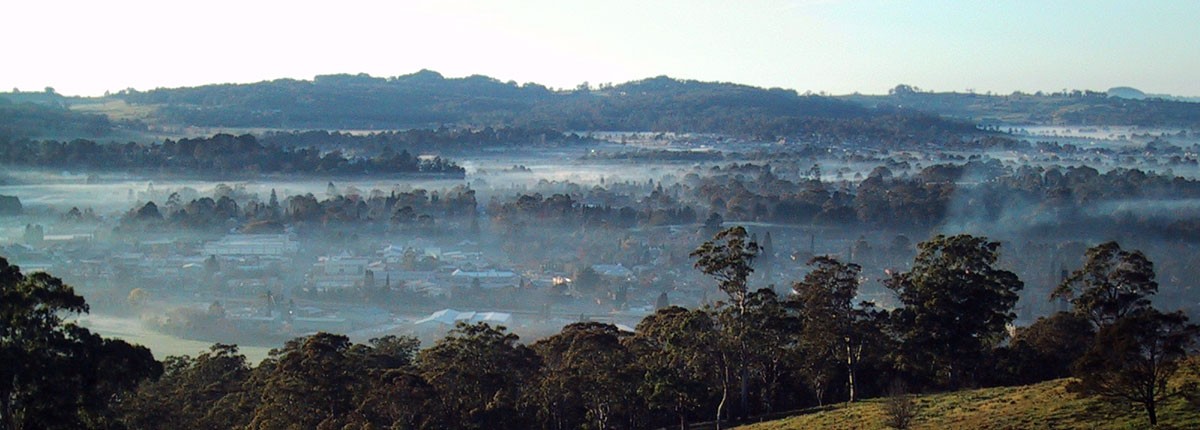
Bowral. Image supplied by Centennial Vineyards.
“It’s a cold region” explains Cosgriff.
“We’re about 700 metres above sea level, and that altitude makes it a lot harder to ripen the grapes, because every hundred metres above sea level you lose a degree in Celsius for ripening. The red varieties need a bit more heat and sunshine. When it was proven that it wasn’t a great region for those red varieties, people subsequently worked out that white varieties like Riesling, Pinot, especially Pinot Gris, and Sparkling wines are much more suited to the area.
“We’re quite elevated, and we cop a lot of coastal influences. We get a lot of rain in February and March, so we need to get grapes that ripen early.”
“Different grapes ripen at different rates and at different times. With Cabernet, it ripens very late, so we really have to find a variety that ripens at the right time, otherwise you run into trouble here. You’re better going for an earlier ripening variety. They tend to be early ripening whites, sparkling wines. It tends to be those types of wines, and by comparison Cabernet, Merlot and Shiraz, they struggle a bit.”
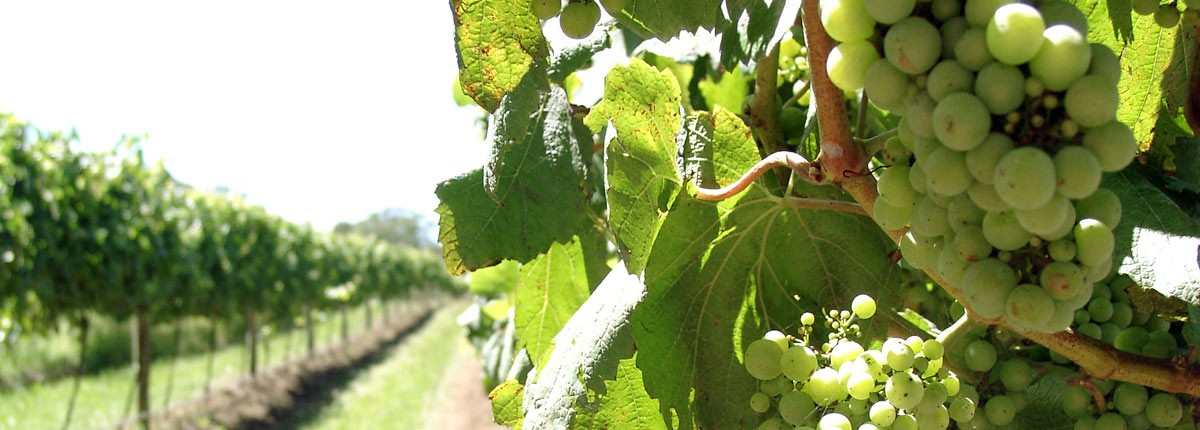
Centennial’s White Grape Vineyard. Image supplied by Centennial Vineyards.
When it became clear that the Highlands had great potential for white wine growth, the region took off in the early 2000s, bolstered by demand as Australians began to develop a taste in white wines. Varieties of Pinot (especially Pinot Gris), Riesling and Sparkling Wines proved an ideal match for the Highland climate.
“You look for a region that’s different to another region. You go to France and all their different regions; they have specific climates and soils, that make them ideal for specific styles of wine. In Australia, the same thing happened.”
“The Southern Highlands has done very well in wine shows
around Australia, especially in the last fifteen years”
Now, Highland wineries like Centennial Vineyards and and Tertini Wines have spearheaded the Highland’s wine industry. At a national level, Southern Highland wines have become increasingly successful both commercially and competitively. For Cosgriff, the key to successful wine (and indeed the growth of the Highland industry itself) is time. Time not just spent in producing great wine, but the fact over the last fifteen years, Australians have become more willing to try more varieties of wine.
“The Southern Highlands has done very well in wine shows around Australia, especially in the last fifteen years. People in general are more open to trying wines from different regions they don’t know necessarily much about. With the Southern Highlands wine region, you ask twenty people in Sydney, and probably two people might know about it, whereas a lot more people would know about the Hunter Valley. Relatively speaking, I still think the Highlands is an incredibly new region; but we’re still trying to get people to notice us. And we’ve been doing a good job with us winning prizes and awards. The Hunter Valley as a wine region has been going for over a hundred years, so it will always take time.”
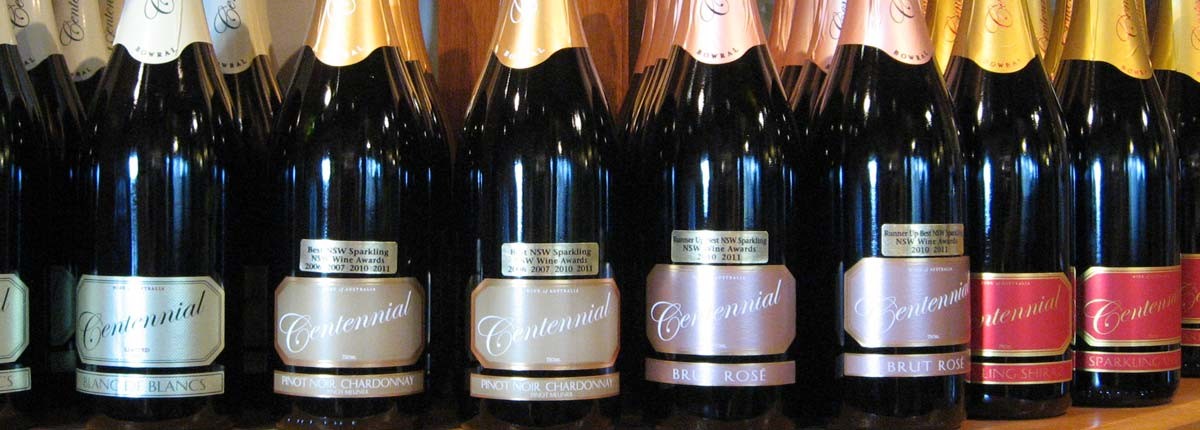
Centennial’s Award-Winning Chardonnay Wines. Image supplied by Centennial Vineyards.
What Cosgriff is more excited about is the growth of wine tourism. The Southern Highlands already has many exciting tourist spots, from Morton National Park and Mt Gibraltar to the International Cricket Hall of Fame at Bradman Oval. Vineyards have gone beyond just making wine, they have created a unique country hospitality experience, with restaurants in the vineyards becoming increasingly popular.
“People love to go out and study what makes a specific wine region perfect for growing wine” Cosgriff says.
“I think people are a lot more interested in that these days than they were in the past. People have become more wine-savvy. To me, it’s nice and cool here. It has beautiful scenery, beautiful trees, it’s got that elevated high country sort of feel to it. The weather goes along with that. I think it’s unique because of its climate.”
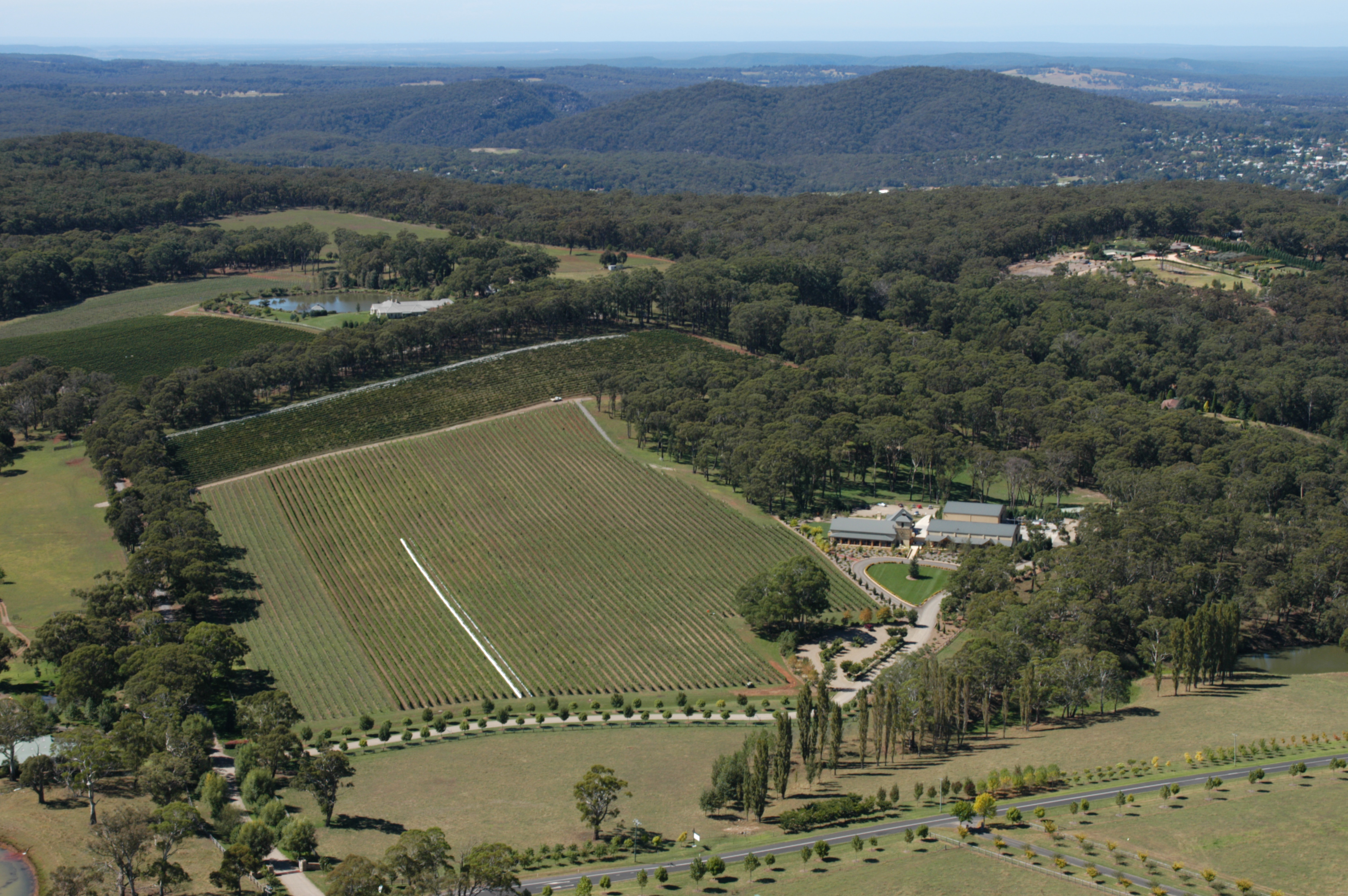
Centennial Vineyards with Mittagong in the background. Image supplied by Centennial Vineyards.
Cosgriff believes that in the future the Southern Highlands may be the new go-to location for wine hunters, Sydneysiders in particular. It is hard to argue against that: it is only an hour and fifteen-minute drive away from the big smoke. To Cosgriff, the Highlands has a golden opportunity to become a major player in the Australian beverage landscape, even more so considering other industries like cider and breweries have followed wine into the area.
“I think a visit to the Southern Highlands is a far more attractive prospect than the Hunter Valley. Down here there’s a lot of other great things you can do. There’s great restaurants, golf courses, there’s far more to do than what’s in the Hunter Valley. Add in the fact that it’s an easy drive. I think the best times for Southern Highlands wine will be in the coming years.
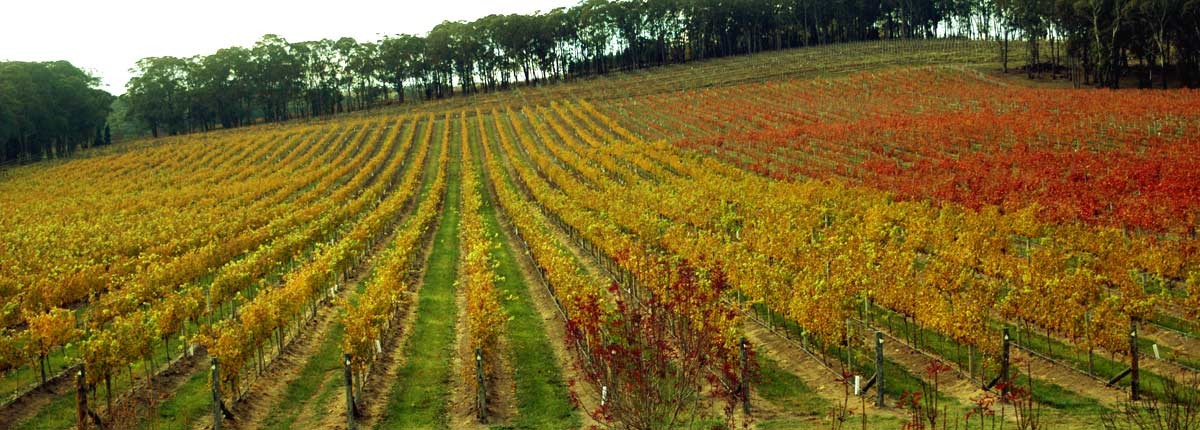
Vineyards in Autumn. Image supplied by Centennial Vineyards.
Tony Cosgriff is the Winemaker of Centennial Vineyards, one of the premier vineyards of the Southern Highlands. For more information on their wines and restaurant experiences, head to www.centennial.net.au, or contact the Centennial Cellar Door on 02 4861 8722, or the Centennial Vineyards Restaurant on 02 4861 8701 for enquiries and reservations.
Until next time,
Your Wine Hunter, Jame Gosper.

